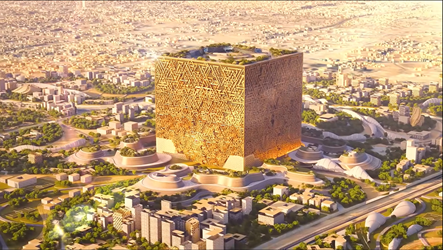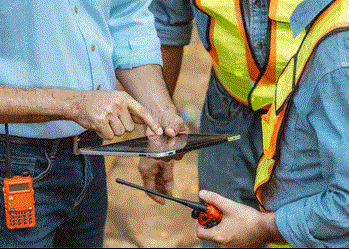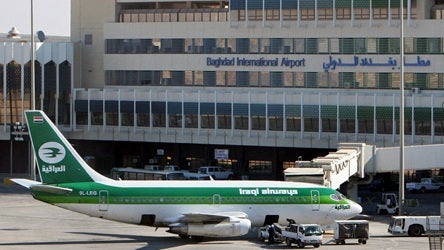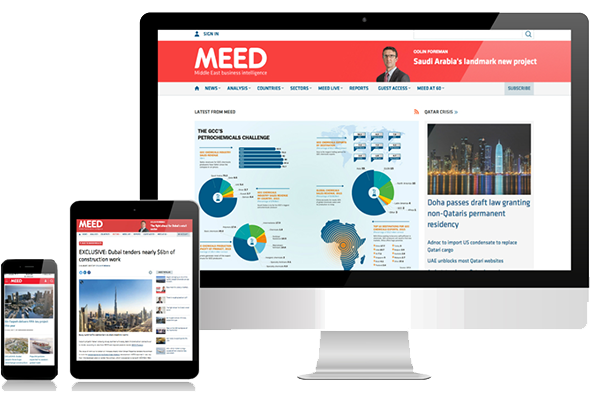Energy security facilitates upstream spending
1 March 2023
MEED's upstream oil & gas report also includes: Hydrocarbons exploration rebounds

Middle East and North Africa (Mena) oil and gas producers have stepped up to the challenge of meeting the world’s energy needs, especially since the outbreak of the Russia- Ukraine war in February 2022. Although state-owned and private energy producers alike are motivated by the profitability that high commodity prices bring, supply from the region is critical in addressing global energy security.
Regional hydrocarbons producers spent almost $19bn on upstream projects in 2022 as they sought to swiftly bring additional energy supplies online to offset the impact of the lack of Russian volumes on the global market, and particularly on Europe.
With the larger issue of an effective energy transition taking longer than projected, coupled with the prevailing supply shortage, Mena players have put in place major capital expenditure (capex) plans to boost their long-term oil and gas production potential.
The overall value of Mena oil and gas production projects in various pre-execution stages is more than $125bn, according to regional projects tracker MEED Projects.
Robust upstream spending
Qatar dominated spending on upstream projects for the second year in a row in 2022, accounting for more than a third of the $18.9bn of engineering, procurement and construction (EPC) contract awards in the Mena region.
With the goal of consolidating its position as the world’s largest supplier of gas, QatarEnergy is making progress with its North Field liquefied natural gas (LNG) expansion programme, estimated to be worth about $30bn. This will raise Qatar’s LNG production to 126 million tonnes a year (t/y) in two phases by 2027.
The two-stage North Field Production Sustainability (NFPS) programme will run in parallel, to help maintain gas production from the large offshore reserve in order to match the feedstock requirements of the LNG expansion scheme.
QatarEnergy’s biggest award in 2022 was a $4.5bn EPC contract won by Italian contractor Saipem. It covers the building and installation of two gas compression facilities as part of the second development phase of the NFPS project.
The two gas compression complexes covered in the package will weigh 62,000 tonnes and 63,000 tonnes and will be the largest fixed steel jacket compression platforms ever built.
Saudi Aramco allocated a capex budget of $40bn-$50bn for 2022, an increase on the $31.9bn it spent in 2021. The firm came second to QatarEnergy, spending about $5.8bn on upstream EPC contracts in 2022.
Aramco awarded contracts for 11 offshore engineering, procurement, construction and installation (EPCI) tenders during the year to contractors in its Long-Term Agreement (LTA) pool of offshore service providers.
Through these offshore structure refurbishment and modification works, Aramco intends to maintain and enhance the oil and gas production capacity of its Abu Safah, Manifa, Marjan, Qatif and Safaniya fields.
In the first quarter of 2022, Aramco also selected Japanese contractor JGC Corporation for the two main onshore packages of the Zuluf upstream project. Package one is estimated to be the bigger of the two onshore packages, with an approximate contract value of $2bn-$2.5bn. It covers EPC work to build hydrocarbons processing facilities. Package two, covering utilities and water injection facilities, is estimated to be worth about $1bn.
Healthy projects pipeline
With regional energy producers stepping up efforts to achieve their oil and gas output goals more quickly, the level of spending on upstream EPC project contracts this year is expected to increase to almost three times that of 2022.
Iran is still under the weight of economic sanctions and has failed to reach an agreement with Western governments regarding its nuclear programme. Despite this, the country appears to still be striving to increase its oil and gas production levels.
State-owned Pars Oil & Gas Company (POGC) is understood to be moving ahead with a programme to develop the offshore North Pars gas field, estimated to hold reserves of up to 55 trillion cubic feet.
POGC has undertaken a $16bn EPC project, with offshore and onshore components, to start gas production from North Pars. With Tehran suffering from a lack of foreign investment in its energy sector, however, the actual size of the project could shrink significantly and there could be delays to its development timeline.
QatarEnergy, meanwhile, has progressed to the next phase of its North Field LNG expansion programme, known as North Field South (NFS). Contractors submitted commercial bids in February for the estimated $6bn package covering EPCI work on two main LNG trains.
Investing in growth
Abu Dhabi National Oil Company (Adnoc) has adopted a five-year business plan with a capex budget of $150bn for 2023-27. The firm has also said it now aims to meet its oil production capacity target of 5 million barrels a day (b/d) by 2027 instead of 2030.
Having brought its oil and gas production capacity targets forward, Adnoc is accelerating work on key projects. The firm plans to raise gas output by 3 billion cubic feet a day (cf/d) in the next few years, and the Hail and Ghasha offshore sour gas production project will be central to achieving this goal.
In January, Adnoc signed pre-construction service agreements with two consortiums of contractors for the offshore and onshore EPC work on the gas production project, which is estimated to be worth more than $10bn.
France-headquartered Technip Energies, South Korean contractor Samsung Engineering and Italy’s Tecnimont have formed a consortium for the Hail and Ghasha onshore package.
Italian contractor Saipem, Abu Dhabi’s National Petroleum Construction Company and state-owned China Petroleum Engineering & Construction Company will work together on the offshore package.
Under the agreements, which are valued at $80m and $60m for the onshore and offshore packages, respectively, the contractors will perform initial detailed engineering and procurement services for critical long-lead items.
The consortiums will also prepare proposals for the main EPC work on the project, which Adnoc will evaluate on an open-book cost estimate basis.
Production from the Ghasha concession, where the Hail and Ghasha fields are located, is expected to start in 2025, ramping up to more than 1.5 billion cf/d before the end of the decade.
Meanwhile, Saudi Aramco is striving to increase its maximum oil output spare capacity to 13 million b/d by 2027 from about 12 million b/d currently, and raise gas production by 50 per cent by the end of this decade.
To realise these targets, Aramco is expected to significantly raise capex on upstream EPC contracts this year. The company is preparing to award more than $3bn-worth of offshore EPCI deals to its LTA contractors before the end of the first quarter of 2023.
Later this year, Aramco is anticipated to award several more multibillion-dollar offshore EPCI jobs. This will include 10 packages of a project to incrementally increase oil production from the Safaniya offshore oil and gas field in Saudi Arabia – the world’s largest offshore oil field.
Exclusive from Meed
-
 WEBINAR: Mena Oil & Gas Projects Market 2025-26
WEBINAR: Mena Oil & Gas Projects Market 2025-2610 July 2025
-

-
 Chinese firm wins Mid Island Parkway tunnelling deal
Chinese firm wins Mid Island Parkway tunnelling deal10 July 2025
-
 Iraq tenders Baghdad airport PPP project
Iraq tenders Baghdad airport PPP project9 July 2025
-

All of this is only 1% of what MEED.com has to offer
Subscribe now and unlock all the 153,671 articles on MEED.com
- All the latest news, data, and market intelligence across MENA at your fingerprints
- First-hand updates and inside information on projects, clients and competitors that matter to you
- 20 years' archive of information, data, and news for you to access at your convenience
- Strategize to succeed and minimise risks with timely analysis of current and future market trends

Related Articles
-
 WEBINAR: Mena Oil & Gas Projects Market 2025-26
WEBINAR: Mena Oil & Gas Projects Market 2025-2610 July 2025
Date & Time: Tuesday 29 July 2025 | 11:00 AM GST
Agenda:
1. Summary of the Mena oil, gas and petrochemicals projects market
2. Summary description of the main megaprojects, including project programmes
3. Analysis of active contracts and spending to date
4. Analysis of top contracts by work already awarded
5. Long-term capital expenditure outlays and forecasts
6. Highlights of key contracts to be tendered and awarded over the next 18 months
7. Top contractors and clients
8. Breakdown of spending by segment, ie, oil, gas, petrochemicals – upstream, downstream, onshore and offshore
9. Q&A session
https://image.digitalinsightresearch.in/uploads/NewsArticle/14241705/main.gif -
 New Murabba signs up South Korean firm for design works
New Murabba signs up South Korean firm for design works10 July 2025
Register for MEED’s 14-day trial access
Saudi Arabia’s New Murabba Development Company (NMDC) has signed a memorandum of understanding (MoU) with South Korea’s Heerim Architects & Planners to explore further design works on assets at the 14 square-kilometre New Murabba downtown project.
According to an official statement: “Heerim Architects & Planners will explore distinctive architectural plans that complement the development’s masterplan, with special focus on anchor assets, linear parks and smart city features.”
New Murabba CEO Michael Dyke signed the agreement last week during the company’s Investment and Partnership Forum in Seoul.
At the event, NMDC also signed an MoU with South Korea’s Naver Cloud Corporation to explore technological solutions for delivering the New Murabba downtown project.
According to an official statement: “The three-year agreement covers exploring innovative technology and automation to support the delivery of New Murabba, including robotics, autonomous vehicles, a smart city platform and digital solutions for monitoring construction progress.”
NMDC is in Seoul to examine technological offerings, assess financing options and showcase the investment opportunities available for the New Murabba downtown development.
The statement added that the excavation works for The Mukaab, the centrepiece of the overall development, have now been completed.
The Mukaab is a Najdi-inspired landmark that will be one of the largest buildings in the world. It will be 400 metres high, 400 metres wide and 400 metres long. Internally, it will have a tower on top of a spiral base and a structure featuring 2 million square metres (sq m) of floor space designated for hospitality. It will feature commercial spaces, cultural and tourist attractions, residential and hotel units, and recreational facilities.
Downtown destination
The New Murabba destination will have a total floor area of more than 25 million sq m and feature more than 104,000 residential units, 9,000 hotel rooms and over 980,000 sq m of retail space.
The scheme will include 1.4 million sq m of office space, 620,000 sq m of leisure facilities and 1.8 million sq m of space dedicated to community facilities.
The project will be developed around the concept of sustainability and will include green spaces and walking and cycling paths to promote active lifestyles and community activities.
The living, working and entertainment facilities will be developed within a 15-minute walking radius. The area will use an internal transport system and will be about a 20-minute drive from the airport.
The downtown area will feature a museum, a technology and design university, an immersive, multipurpose theatre, and more than 80 entertainment and cultural venues.
 READ THE JULY 2025 MEED BUSINESS REVIEW – click here to view PDF
READ THE JULY 2025 MEED BUSINESS REVIEW – click here to view PDFUAE and Turkiye expand business links; Renewed hope lies on the horizon for trouble-beset Levant region; Gulf real estate momentum continues even as concerns emerge
Distributed to senior decision-makers in the region and around the world, the July 2025 edition of MEED Business Review includes:
> AGENDA: UAE-Turkiye trade gains momentum> INTERVIEW 1: Building on UAE-Turkiye trade> INTERVIEW 2: Turkiye's Kalyon goes global> INTERVIEW 3: Strengthening UAE-Turkiye financial links> INTERVIEW 4: Turkish Airlines plans further growth> CURRENT AFFAIRS: Middle East tensions could reduce gas investments> GCC REAL ESTATE: Gulf real estate faces a more nuanced reality> PROJECTS MARKET: GCC projects market collapses> INTERVIEW 5: Hassan Allam eyes role in Saudi Arabia’s transformation> INTERVIEW 6: Aseer region seeks new investments for Saudi Arabia> LEADERSHIP: Nuclear power makes a global comeback> LEVANT MARKET FOCUS: Levant states wrestle regional pressures> GULF PROJECTS INDEX: Gulf projects index continues climb> CONTRACT AWARDS: Mena contract award activity remains subdued> ECONOMIC DATA: Data drives regional projects> OPINION: A farcical tragedy that no one can endTo see previous issues of MEED Business Review, please click herehttps://image.digitalinsightresearch.in/uploads/NewsArticle/14239016/main.jpg -
 Chinese firm wins Mid Island Parkway tunnelling deal
Chinese firm wins Mid Island Parkway tunnelling deal10 July 2025

Register for MEED’s 14-day trial access
Beijing-headquartered China Railway Tunnel Engineering Group has won a $60m subcontract for the tunnelling works on package 1B of the Mid Island Parkway project in Abu Dhabi.
Package 1B entails the construction of a cut-and-cover tunnel to cross the Khor Laffan Channel, which is the area between the Saadiyat and Um-Yifeenah islands.
The tunnel, which will be between 900 metres and 1 kilometre (km) long, is being constructed on a design-and-build basis and will tie in to packages 1A and 1C.
The project is being jointly constructed by a joint venture of local firm Yas Projects (Alpha Dhabi Holding) and Beijing-based China Railway International Group.
In June last year, MEED exclusively reported that Abu Dhabi's Department of Municipality & Transport had awarded contracts for three packages for phase one of the Mid Island Parkway Project (MIPP), as part of the Plan Capital urban evolution programme.
Phase one will start at the existing Saadiyat Interchange, which will connect the E12 road to the MIPP, and will end with the recently constructed Um-Yifeenah Highway.
It comprises a dual main road with a total length of 8km, including four traffic lanes in each direction, two interchanges, a tunnel and associated infrastructure works.
MIPP phase one is further divided into packages 1A, 1B and 1C, which were awarded separately.
The project ownership has been transferred from Aldar Properties to Abu Dhaibi's Department of Municipalities & Transport.
Previously, it was transferred from Abu Dhabi General Services Company (Musanada) to Aldar Properties, and the project was included in the Abu Dhabi Investment Office's public-private partnership project pipeline.
 READ THE JULY 2025 MEED BUSINESS REVIEW – click here to view PDF
READ THE JULY 2025 MEED BUSINESS REVIEW – click here to view PDFUAE and Turkiye expand business links; Renewed hope lies on the horizon for trouble-beset Levant region; Gulf real estate momentum continues even as concerns emerge
Distributed to senior decision-makers in the region and around the world, the July 2025 edition of MEED Business Review includes:
> AGENDA: UAE-Turkiye trade gains momentum> INTERVIEW 1: Building on UAE-Turkiye trade> INTERVIEW 2: Turkiye's Kalyon goes global> INTERVIEW 3: Strengthening UAE-Turkiye financial links> INTERVIEW 4: Turkish Airlines plans further growth> CURRENT AFFAIRS: Middle East tensions could reduce gas investments> GCC REAL ESTATE: Gulf real estate faces a more nuanced reality> PROJECTS MARKET: GCC projects market collapses> INTERVIEW 5: Hassan Allam eyes role in Saudi Arabia’s transformation> INTERVIEW 6: Aseer region seeks new investments for Saudi Arabia> LEADERSHIP: Nuclear power makes a global comeback> LEVANT MARKET FOCUS: Levant states wrestle regional pressures> GULF PROJECTS INDEX: Gulf projects index continues climb> CONTRACT AWARDS: Mena contract award activity remains subdued> ECONOMIC DATA: Data drives regional projects> OPINION: A farcical tragedy that no one can endTo see previous issues of MEED Business Review, please click herehttps://image.digitalinsightresearch.in/uploads/NewsArticle/14238039/main3047.gif -
 Iraq tenders Baghdad airport PPP project
Iraq tenders Baghdad airport PPP project9 July 2025
Register for MEED’s 14-day trial access
Iraq’s Ministry of Transport and the General Company for Airport & Air Navigation Services have released a tender inviting firms to bid for a contract to develop Baghdad International airport on a public-private partnership (PPP) basis.
The notice was issued in July, and the submission deadline is in September.
According to an official statement posted on its website, Iraq’s Ministry of Transport said that 10 out of 14 international consortiums that expressed interest in the project earlier this year have been prequalified to compete for the tender.
The scope of the estimated $400m-$600m project involves rehabilitating, expanding, financing, operating and maintaining the airport. It is the first airport PPP project to be launched in Iraq.
The initial capacity of the airport is expected to be around 9 million passengers, which will be gradually increased to 15 million passengers.
The International Finance Corporation (IFC), a member of the World Bank Group, is the project’s lead transaction adviser.
Iraq is already developing the Baghdad and Najaf-Karbala metro projects using a similar PPP model.
Earlier this month, MEED reported that Iraq intends to retender the contract to develop and operate the Baghdad Metro project, following the award of the estimated $2.5bn contract last year.
According to local media reports, Nasser Al-Assadi, adviser to Prime Minister Mohammed Sudani, stated that the previous developers had overestimated the project budget; therefore, the government will relaunch the entire process to implement the project.
https://image.digitalinsightresearch.in/uploads/NewsArticle/14229008/main.jpg -
 Contractors prepare revised bids for Roshn stadium
Contractors prepare revised bids for Roshn stadium9 July 2025

Register for MEED’s 14-day trial access
Saudi gigaproject developer Roshn has invited firms to submit revised commercial proposals by 24 July for a contract to build a new stadium adjacent to the National Guard facilities to the southwest of Riyadh.
Known as the National Guard Stadium, it will be delivered on an early contractor involvement (ECI) basis. It will cover an area of over 450,000 square metres and be able to accommodate 46,000 spectators.
The scope of work also covers the construction of auxiliary facilities, including training academy offices and two hotels, as well as retail and food and beverage outlets.
The firms had initially submitted bids on 8 April for the contract.
The stadium is scheduled to host 32 Fifa World Cup tournament games in 2034.
In August last year, MEED reported that Saudi Arabia plans to build 11 new stadiums as part of its bid to host the 2034 Fifa World Cup.
Eight stadiums will be located in Riyadh, four in Jeddah and one each in Al-Khobar, Abha and Neom.
The proposal outlines an additional 10 cities that will host training bases. These are Al-Baha, Jazan, Taif, Medina, Al-Ula, Umluj, Tabuk, Hail, Al-Ahsa and Buraidah.
The bid proposes 134 training sites across the kingdom, including 61 existing facilities and 73 new training venues.
The kingdom was officially selected to host the 2034 Fifa World Cup through an online convention of Fifa member associations at the Fifa congress on 11 December 2024.
 https://image.digitalinsightresearch.in/uploads/NewsArticle/14228507/main.jpg
https://image.digitalinsightresearch.in/uploads/NewsArticle/14228507/main.jpg


